Came here to see some top-notch bio examples? We get it. Sometimes you need a little inspiration without all the fluff. So let’s get started with some UX design bios that don’t just get you noticed but remembered.
If you have more time, stick around and we’ll get into the whys, common mistakes, and the ins and outs of crafting a professional bio that will be memorable enough to get you that interview.
Bio examples from product designer portfolios
Let us show you some examples from UX designers, researchers, and product designers. Our wonderful UXfolio community has some amazing bits of inspiration for you.
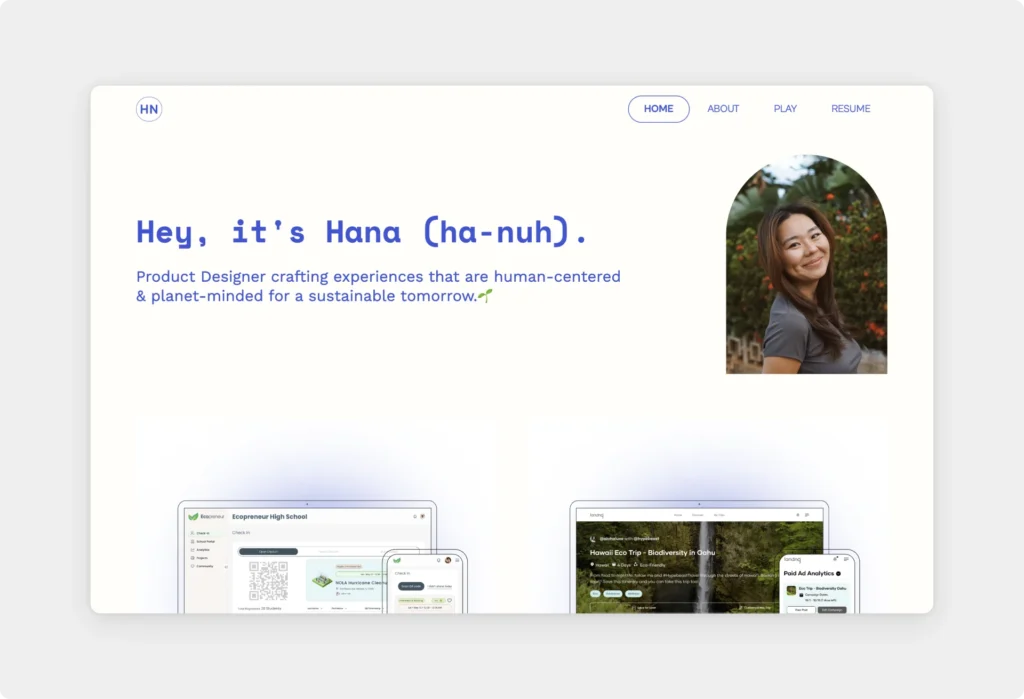
We like this bio because it shows Hana’s unique approach and communicates her values.
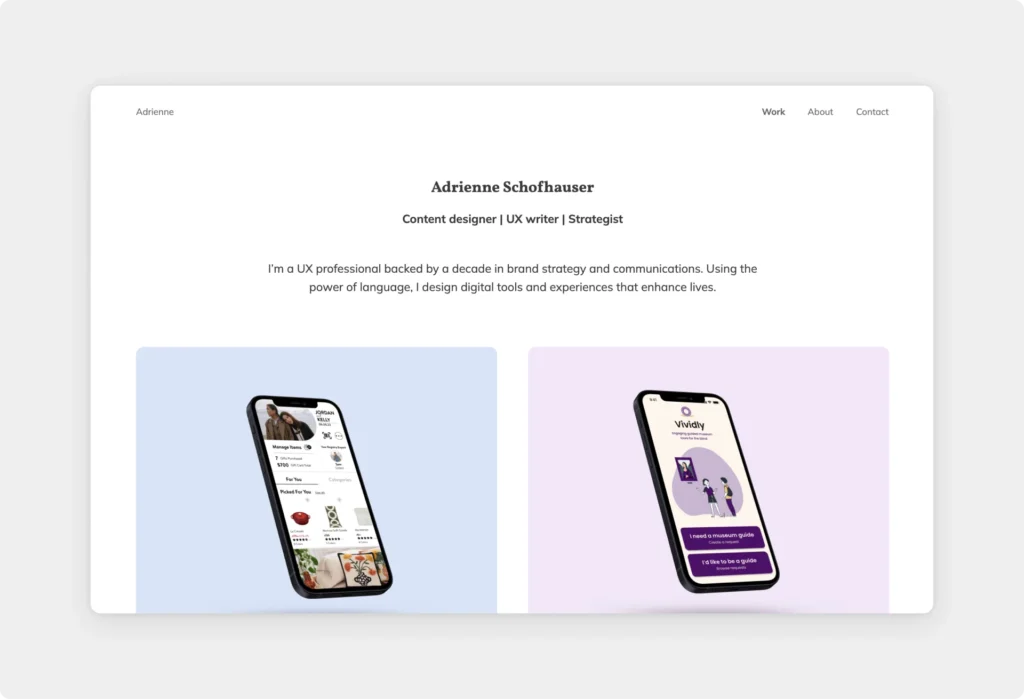
We like this bio because it communicates Adrienne’s expertise and shows why she’s passionate about what she does.

We like this bio because with the mission-oriented approach, we can get a real glimpse into David’s personality.
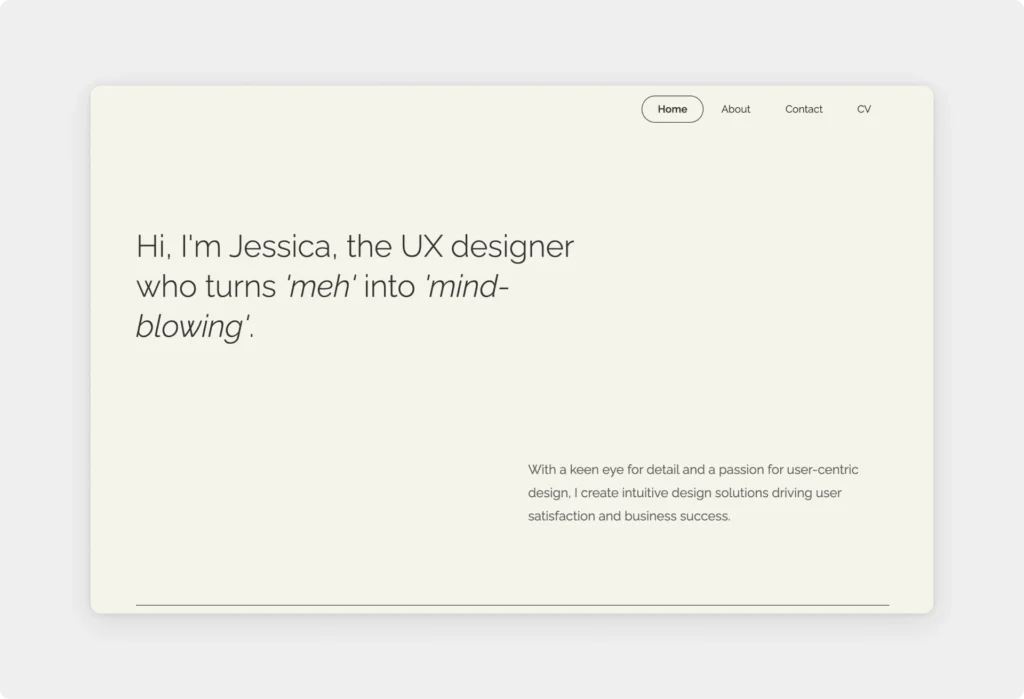
We like this bio because it is memorable and presents Jessica’s unique value proposition.

We like this bio because Abbie included a friendly greeting before listing her impressive roles and her experience.
Bio examples for junior and senior UX designers
To better illustrate the difference between a junior and a senior UX designer, we created these two examples.
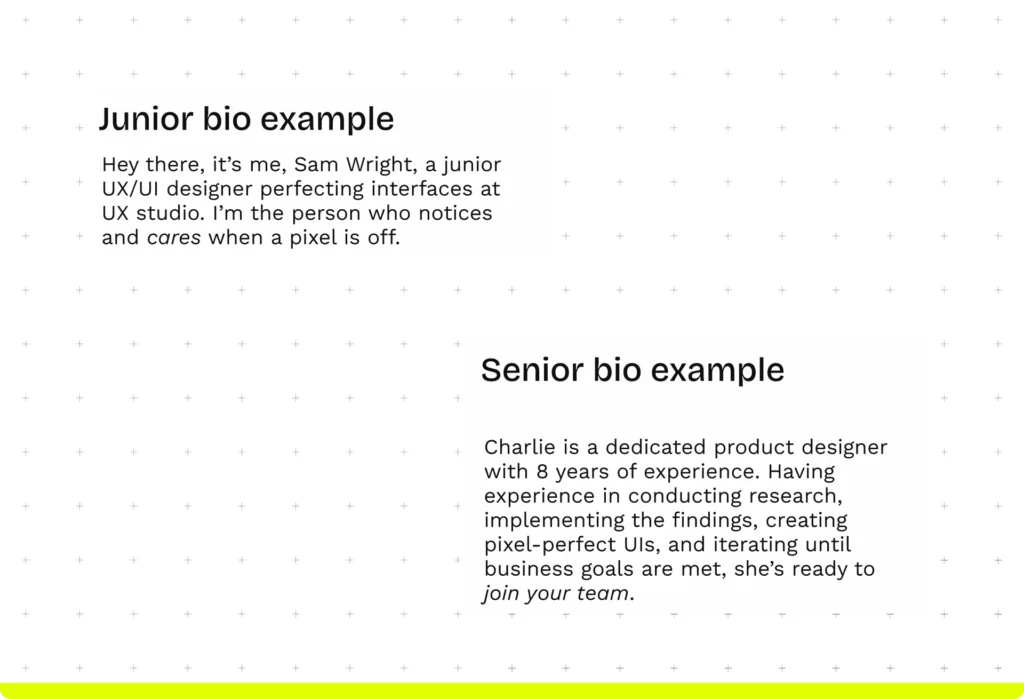
Check out how this junior
- highlights the soft skills and current position instead of dwelling on the lack of experience.
- communicates passion and a good eye for design.
- shows a meticulous approach and proactivity.
- kept it short and to the point.
While the senior’s bio
- highlights the skills and approach.
- includes a call-to-action at the end.
- is more formal with the third-person point of view, but the tone is friendly and approachable.
- addresses the desire of the audience (i.e. reaching business goals).
- sounds professional and confident.
You can write a standout bio no matter where you are in your career. Read about how below.
What is a bio (and what is it not)?
Your bio is a brief written summary that introduces who you are, what your professional background is and gives a glimpse into your personality.
This is the only thing in your portfolio that recruiters will actually read through—so you’d better make it count.
As a snapshot of your professional identity, it includes your
- occupation,
- experience,
- achievements,
- skills,
- impact,
- passion, and
- values.
Depending on where you’ll showcase it, your bio could also include your
- interests,
- hobbies,
- location,
- personal mantra, and
- call-to-action.
What it isn’t?
The bio is not a resume
Though the goal is similar—to introduce you to your potential new employer—, a bio is not meant to be a comprehensive list of all your work experiences, education, and detailed project descriptions. It should be a high-level overview rather than a complete work history.
The bio is not an “About me” page
Though the format is similar—a written description of you as a professional—, your bio shouldn’t be more than two sentences. Whereas on an About page, you may write a longer, more detailed introduction. (Keeping in mind that it will most likely not be read.)
The bio is not a slogan
Though both a bio and a slogan should be intriguing and memorable, a bio includes all relevant information for the reader.
The bio is not a journal entry
While it’s good to add a personal touch, a bio should remain professional. Avoid overly personal details or anecdotes that do not relate to your professional life or your approach to UX.
When do you need a good bio?
You’ll need it for several different reasons. As a UXer, you need a bio for example for
- job applications,
- social media,
- your/your company’s website,
- applying for grants and tenders,
- networking events,
- being a conference speaker.
Let’s see some examples from the same person. Notice how he sends a consistent message while tailoring his bios to the platform and goal.
Portfolio/personal website:

Social media:
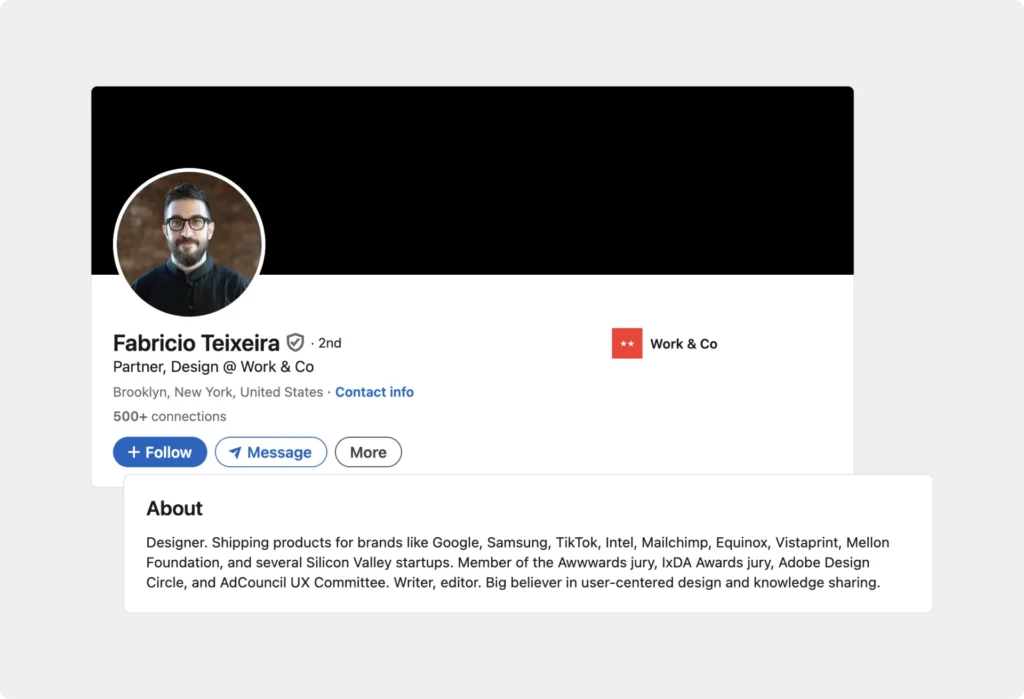
Conference speaker
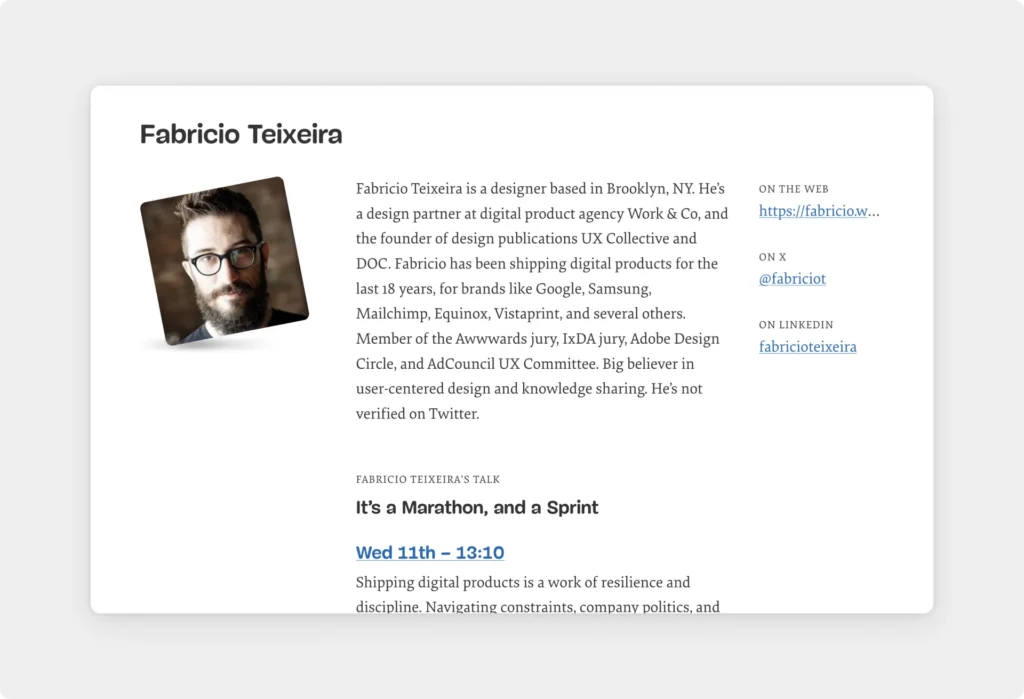
Chances are you won’t need your bio until you need it ASAP. So, let’s write yours today.
How to write a good personal bio?
Communicate consistently
Reflect on what sets you apart from other UX professionals. This could be a unique combination of skills, specific achievements, or a particular approach to UX design. Then highlight this in your bio across all platforms.
Get inspired
Look at people in similar shoes as you or people in the industry you value. You may also get inspiration from outside your field. Read your favorite book’s author description, the keynote speaker’s bio at the next UX conference you attend, or your friend’s About page on their portfolio.
Shift your point of view
If you find it difficult to write about yourself, imagine how a trusted friend, colleague, or mentor would describe you. This can help you write more authentically and highlight your strengths in a genuine manner.
Focus on your impact
There’s nothing more objective but impressive than including tangible results. Where possible, show the metrics or specific outcomes that demonstrate your impact. For example, “led a project that increased user satisfaction by 30%.”
Say more with less
Aim for a bio that is concise yet comprehensive. Typically, two to three sentences are sufficient to convey the necessary information without overwhelming the reader.
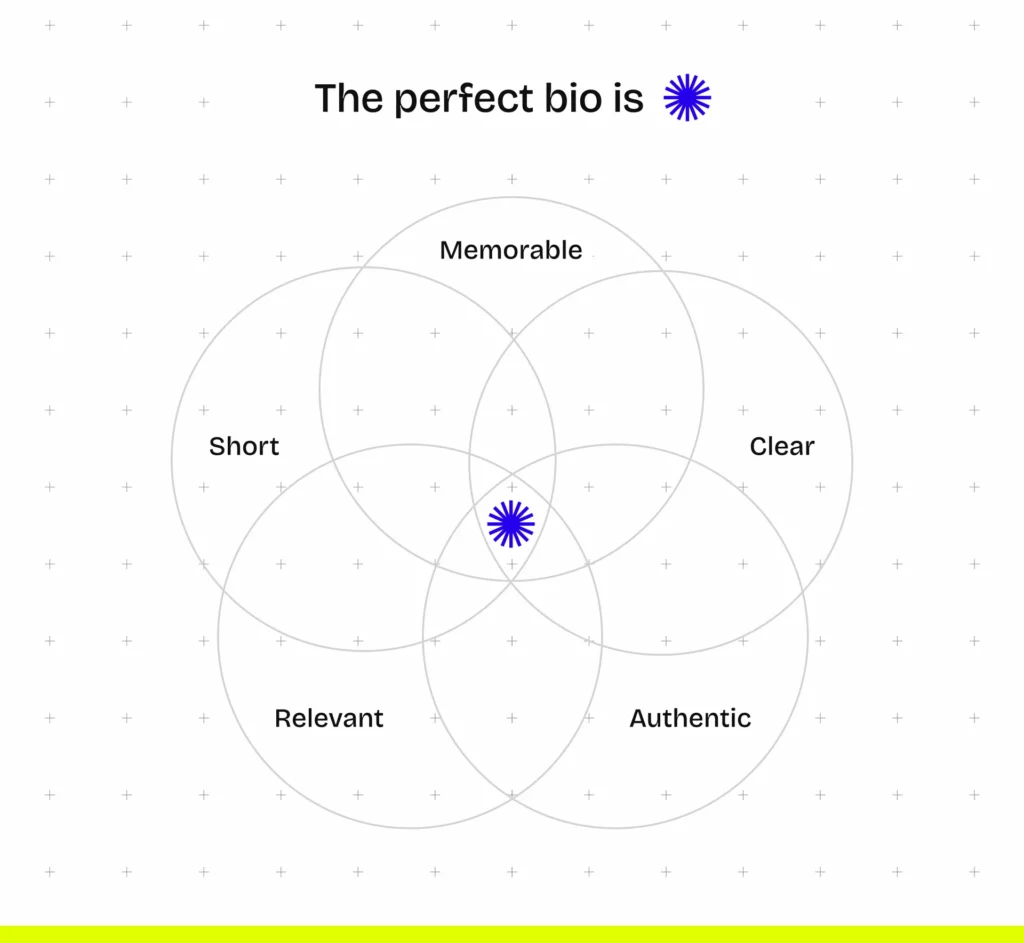
Common questions about UX design bios:
1. What are some common mistakes?
Lack of authenticity
Write as you speak. If you’re naturally casual and approachable, don’t force a formal tone, and don’t use jargon or complex language if that doesn’t match your usual communication style. Authenticity resonates more with readers and makes you memorable.
Writing something forgettable
Phrases like “product designer with empathy, based in Chicago” are too vague and don’t set you apart. Be specific about your skills, achievements, and what makes you unique.
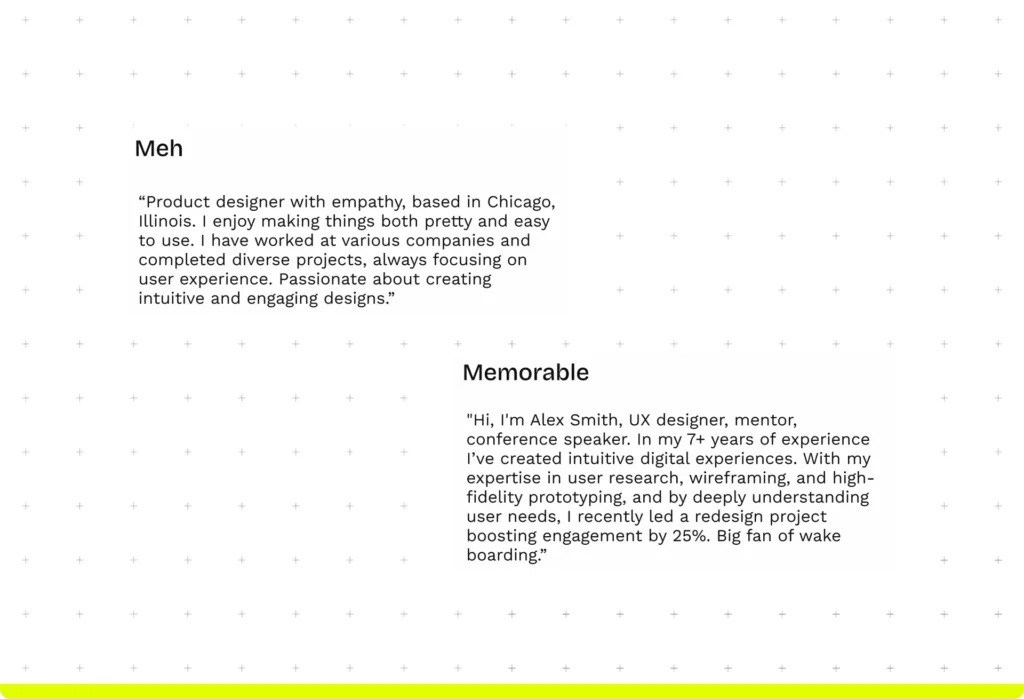
Writing too little or too much
Keep in mind the platform and context where your bio will appear. A lengthy bio might work on LinkedIn but won’t cut it on Instagram or Twitter. Adjust the length accordingly.
Focus on self, not value
While your bio is about you, it should also convey the value you bring to the table. Highlight how your skills and experiences can benefit your future team.
2. Should you include your previous employer?
Though it might feel like it’s a sensitive topic, it’s actually easy to decide. Include your current/previous employer only if it communicates something relevant about you.
For example, unless your previous employer is the industry leader or the product you worked on is cutting edge in the sector, you shouldn’t mention them, just specify the industry you worked in.
3. What point of view is appropriate?
Both First and Third Person Singular is widely accepted. However, they communicate two very different things.
Third Person (he/she/they) is more assertive and professional, often used to give an objective, formal tone. First Person (I) is more personal and approachable, creating a direct connection with the reader. Think about how you wish to be perceived and choose the one that best aligns with the impression you want to make.
Ready to create your bio today?
Our last piece of advice: Don’t wait for inspiration to strike. Get to work and write the first draft that you can iterate on.
With these tips and examples, you’re ready to craft a compelling UX design bio that will stand out and help you make a lasting impression.
But keep in mind that a bio in itself will not get you the job. It’s indispensable to have a top-notch resume and a UX design portfolio that you are proud to share.